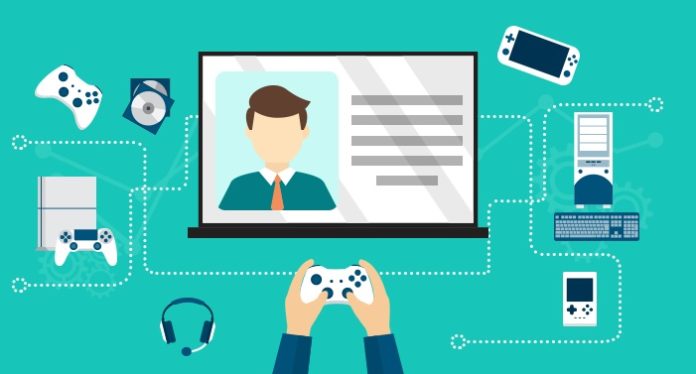Its difficult to stay motivated in your 9 to 5 job and many of us perform the same activities consistently throughout the week, with little enthusiasm or variation. It is one of these daily routine duties that make up the majority of our work, which is frequent even in a dynamic job role thinking new day new opportunity.
Making work more exciting has always been a priority for management and senior executives alike because a disgruntled employee is more likely to leave their job.
Gamification is a new tool in employee engagement and develooment that has just been made possible by the development of using digital technology in office setup and has performing quite well for large enterprises.
In this post, we’ll go over the definition of gamification in more detail, talk about some of its advantages and drawbacks, look at various applications for it in the workplace, and examine some case studies of companies that have effectively used it.
Introduction:
The application of digital games in real world practises is known as gamification. This is employing the elements of games that are entertaining and engaging, such as points, badges, leaderboards, and challenges, to inspire and motivate players to accomplish their objectives.
It’s crucial to understand that gamification does not involve making work into a game. Unlike work, which we must perform whether we like it or not, games are optional activities that people participate in for enjoyment.
Gamification aims to make work more enjoyable, motivating, engaging, and productive in addition to more enjoyable.
An illustration of workplace gamification
After defining gamification, let’s look at a specific instance of how it might be applied in the workplace:
A business may have a customer care division that responds to inquiries and grievances from customers. The business makes the decision to put in place a gamification system in order to increase the productivity of the department.
Also read: Productivity In The Workplace: How Interior Design Can Help?
Setting goals for what they wish to accomplish is the first step. They might aim to shorten the average call handling time or boost the proportion of calls that are effectively addressed within the initial interaction, for instance.
After the objectives have been established, they must be transformed into particular tasks that staff members can perform to gain points, badges, and prizes.
For each call they answer or each customer question they answer, for instance, an employee might receive points. Additionally, they might receive badges for finishing a specific number of calls or answering a specific number of inquiries in a predetermined amount of time.
The organisation can then develop a leaderboard that ranks employees in accordance with their performance using these points and badges. This not only fosters healthy competition but also enables the business to identify and reward the department’s best performers.
Finally, the business might provide bonuses to workers who hit milestones or fulfil predetermined objectives. These incentives could be monetary, like bonuses or commission payments, or they could be non-financial, like additional vacation days or coupons for complimentary goods.
Advantages of Gamification in Workplace:
Gamification has a lot of potential advantages for the workplace. Some of the most noteworthy ones are listed below:
- Increases Employee engagement and productivity:
Making work more interesting and motivating is one of the key aims of gamification. It may provide a sense of pleasure and competition to even the most daily task, making them seem more interesting. Employees may become more motivated and productive as a result.
- Helps people acquire new abilities
Incorporating gamification in training and development can help employee learn new skills. Learning can become more fun and remembered when it is turned into a game. As a result, it is more probable that workers will remember the information and be able to use it in their jobs.
- Customer Loyalty Rises
Another advantage of gamification is increased customer loyalty. Businesses can entice clients to return by rewarding them for accomplishing particular activities or hitting specific milestones like rewarding them with coupons for completing 10 transaction in the app.
Gamification may also make complicated activities seem less overwhelming and more manageable. One way to make a task feel less overwhelming and more enjoyable is to divide it into smaller, more manageable tasks.
- Enhances Competitiveness
In the workplace, healthy rivalry is frequently regarded as advantageous. Employees may be inspired to put in more effort and push themselves to do their best.
By establishing leaderboards or offering awards for achieving specific goals, gamification can be utilised to foster healthy competition. Employees can look at the leaderboard to know who has achieved the highest target and who has the highest closure this way it also removes any favoritism and internal politics since all the data are accessible to management.
Disadvantages of Gamification in the Workplace:
Gamification has a lot of potential advantages, but there are several drawbacks that companies need to be aware of. They consist of the following:
- It can encourage unhealthy competition.
Gamification can result in unhealthy levels of competitiveness, despite the fact that healthy competition can be beneficial. Employees who are overly preoccupied with winning or receiving prizes may tend to put their work or other crucial duties on the back burner.
- It can make people feel excluded.
Gamification has the potential to make employees feel excluded if improperly implemented. This is due to the fact that not everyone will be successful to the same degree, and some individuals may feel like they are falling behind.
- Lengthy Implementation Process:
It Can Take a Long Time Gamification can take a long time to set up and keep up. This is due to the fact that thorough planning, design, and constant monitoring are all necessary for it to function properly.
What Workplace Applications Are There for Gamification?
Gamification in the workplace can be applied in a variety of ways. Here are some specific examples of how you can use this strategy in your company:
- Create a leaderboard.
By setting up a scoreboard where employees are ranked according to how near they are to meeting their targets, gamification can be used in the workplace to motivate people to meet their goals.
Employees will feel motivated and competitive as they work to climb the scoreboard as a result of this.
- Promote Positive Actions
Gamification can also be utilised in the workplace to promote constructive behaviour.
This can be achieved by rewarding staff members for actions that benefit the business, such as being punctual, achieving deadlines, or going above and above for clients. These incentives may take the shape of points, badges, or even tangible goods.
- Increase Client Satisfaction
Additionally, gamification can be utilised to raise customer satisfaction. You can encourage clients to spend more on your app by giving them coupons and discounts for daily in app activity. You may encourage staff to go above and beyond for clients by establishing up a system that rewards great customer service, which will increase customer satisfaction.







